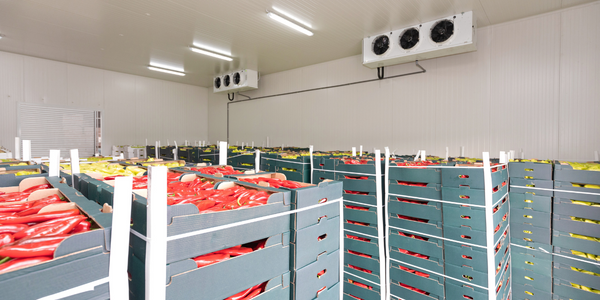Download PDF
Simulation-LED Strategy for Corrosion Prevention
Technology Category
- Analytics & Modeling - Predictive Analytics
- Analytics & Modeling - Digital Twin / Simulation
- Application Infrastructure & Middleware - Data Visualization
Applicable Industries
- Transportation
- Marine & Shipping
Applicable Functions
- Maintenance
- Quality Assurance
Use Cases
- Predictive Maintenance
- Structural Health Monitoring
- Process Control & Optimization
Services
- Software Design & Engineering Services
- System Integration
The Challenge
Corrosion is a significant issue costing billions annually, particularly affecting the transportation industry, including sea, air, and ground transport. The Naval Research Laboratory (NRL) is addressing this problem through fundamental research in corrosion science. The challenge lies in understanding the complex multiphysics problem of corrosion, especially pitting corrosion, which occurs due to electrochemical reactions and mass transport in an electrolyte solution. The irregular growth of corrosion pits due to the metal microstructure has not been adequately addressed in previous research. The goal is to develop new corrosion-resistant materials by understanding the microstructure-corrosion correlations.
About The Customer
The Naval Research Laboratory (NRL) in Washington, D.C., is a premier research facility dedicated to advancing scientific knowledge and technological innovation for the U.S. Navy and Marine Corps. The NRL conducts cutting-edge research in various fields, including materials science, electronics, and environmental science. The laboratory's mission is to provide the Navy with the necessary scientific and technical expertise to maintain its technological edge. The NRL's research efforts are aimed at solving complex problems that impact national security and defense, including the prevention of corrosion, which is a significant maintenance issue for the Navy.
The Solution
The NRL team, led by Siddiq Qidwai, has developed a comprehensive approach to model the growth of corrosion pits in metals within a seawater environment. This involves fully-coupled multiphysics modeling of pit growth under mechanical forces, taking into account the metal's microstructure. The team uses orientation imaging microscopy (OIM) to acquire 3D images of the metal microstructure, which are then incorporated into the COMSOL Multiphysics model. The pitting potential for different crystallographic orientations is determined using MATLAB and integrated into the COMSOL model to calculate the corrosion rate and advance the corrosion front. This innovative approach allows for a detailed understanding of the impact of microstructure on corrosion.
Operational Impact
Quantitative Benefit
Related Case Studies.

Case Study
Airport SCADA Systems Improve Service Levels
Modern airports are one of the busiest environments on Earth and rely on process automation equipment to ensure service operators achieve their KPIs. Increasingly airport SCADA systems are being used to control all aspects of the operation and associated facilities. This is because unplanned system downtime can cost dearly, both in terms of reduced revenues and the associated loss of customer satisfaction due to inevitable travel inconvenience and disruption.

Case Study
IoT-based Fleet Intelligence Innovation
Speed to market is precious for DRVR, a rapidly growing start-up company. With a business model dependent on reliable mobile data, managers were spending their lives trying to negotiate data roaming deals with mobile network operators in different countries. And, even then, service quality was a constant concern.

Case Study
Digitize Railway with Deutsche Bahn
To reduce maintenance costs and delay-causing failures for Deutsche Bahn. They need manual measurements by a position measurement system based on custom-made MEMS sensor clusters, which allow autonomous and continuous monitoring with wireless data transmission and long battery. They were looking for data pre-processing solution in the sensor and machine learning algorithms in the cloud so as to detect critical wear.

Case Study
Cold Chain Transportation and Refrigerated Fleet Management System
1) Create a digital connected transportation solution to retrofit cold chain trailers with real-time tracking and controls. 2) Prevent multi-million dollar losses due to theft or spoilage. 3) Deliver a digital chain-of-custody solution for door to door load monitoring and security. 4) Provide a trusted multi-fleet solution in a single application with granular data and access controls.

Case Study
Vehicle Fleet Analytics
Organizations frequently implement a maintenance strategy for their fleets of vehicles using a combination of time and usage based maintenance schedules. While effective as a whole, time and usage based schedules do not take into account driving patterns, environmental factors, and sensors currently deployed within the vehicle measuring crank voltage, ignition voltage, and acceleration, all of which have a significant influence on the overall health of the vehicle.In a typical fleet, a large percentage of road calls are related to electrical failure, with battery failure being a common cause. Battery failures result in unmet service agreement levels and costly re-adjustment of scheduled to provide replacement vehicles. To reduce the impact of unplanned maintenance, the transportation logistics company was interested in a trial of C3 Vehicle Fleet Analytics.

Case Study
3M Gains Real-Time Insight with Cloud Solution
The company has a long track record of innovative technology solutions. For example, 3M helps its customers optimize parking operations by automating fee collection and other processes. To improve support for this rapidly expanding segment, 3M needed to automate its own data collection and reporting. The company had recently purchased the assets of parking, tolling, and automatic license plate reader businesses, and required better insight into these acquisitions. Chad Reed, Global Business Manager for 3M Parking Systems, says, “With thousands of installations across the world, we couldn’t keep track of our software and hardware deployments, which made it difficult to understand our market penetration.” 3M wanted a tracking application that sales staff could use to get real-time information about the type and location of 3M products in parking lots and garages. So that it could be used on-site with potential customers, the solution would have to provide access to data anytime, anywhere, and from an array of mobile devices. Jason Fox, Mobile Application Architect at 3M, upped the ante by volunteering to deliver the new app in one weekend. For Fox and his team, these requirements meant turning to the cloud instead of an on-premises datacenter. “My first thought was to go directly to the cloud because we needed to provide access not only to our salespeople, but to resellers who didn’t have access to our internal network,” says Fox. “The cloud just seemed like a logical choice.”





